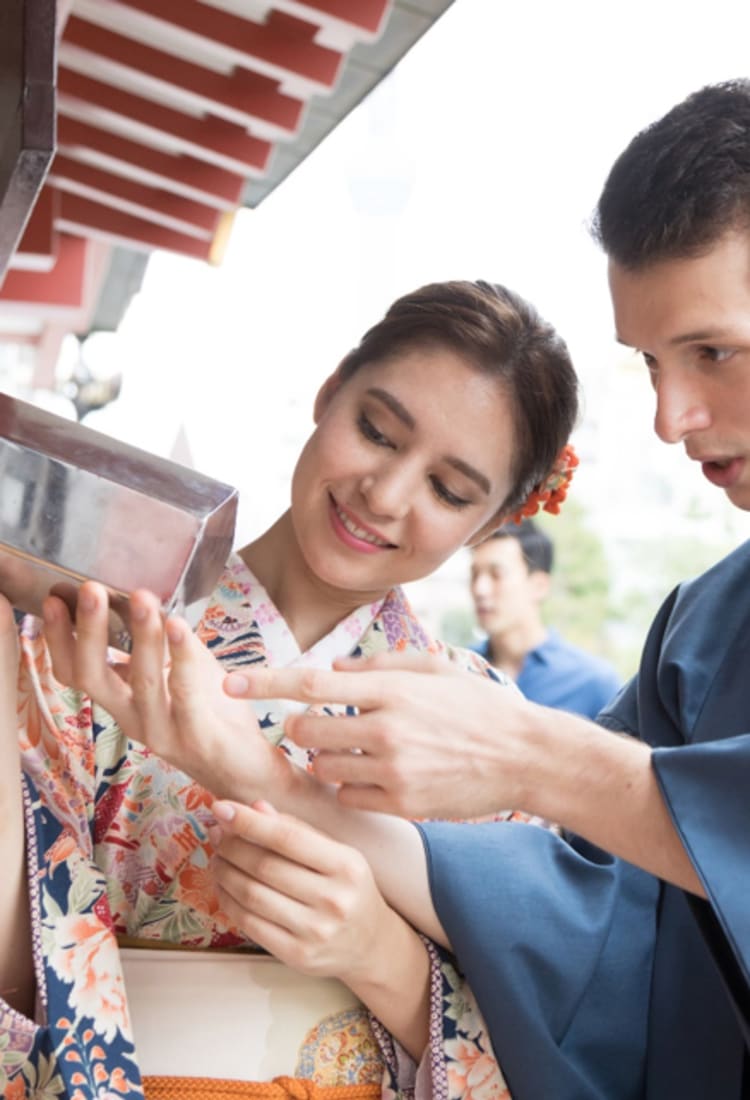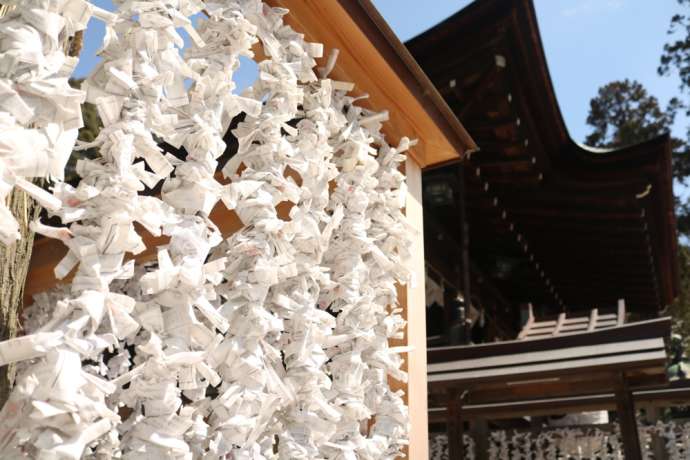
Draw an "Omikuji" Fortune Slip at Japan's Temples or Shrines
What is “Omikuji”?
Omikuji has nearly 1000 years of history and is said to have started in old times when people drew lots to hear an divine opinion on such things as predicting government outcomes or choosing a successor. It has evolved into a way to predict the fortunes of individual people, showing a person’s overall fortune for the future as well as a prediction for detailed items including health, work, love, business, study and travel.

The fee for Omikuji varies at each shrine and temple, but it is usually about 100 to 200 yen. To receive Omikuji you usually use a square pillar box or a cylinder box with long and thin sticks called “Mikuji-bo” inside which you shake and draw Omikuji of the number written on the stick that comes out. However there are also unique ways to receive Omikuji such as vending machines where a robot lion brings Omikuji or ones that come in the mascot of a cat or a pigeon. Nishiki Tenmangu Shrine famous for its god of learning has “Karakuri Omikuji” where a mechanized robot lion brings your Omikuji when you put money in.

How to read “Omikuji”
Once you draw your Omikuji, read its explanation carefully. Omikuji shows your overall fortune for the future with the rank in the order of “Dai-kichi, Kichi, Chu-kichi, Sho-kichi, and Kyo”, meaning excellent luck, general luck, middle luck, small luck, and bad luck respectively. The fortune gets worse from “Dai (excellent luck)” to “Sho (small luck)” and the one ranked below Sho is “Kyo” which means the worst luck.

If you draw excellent luck, a fantastic experience may be waiting for you during your trip in Japan. But even if you unfortunately draw bad luck, don’t be discouraged. Omikuji always explains how to improve your fortune, so check it carefully.

Each shrine and temple has different beliefs, but the general tradition is for people to take Omikuji home so excellent luck or general luck will remain with them. But if you unfortunately draw bad luck, tie it to a designated place in the grounds of the shrine or temple. The place varies for each shrine and temple, but there are strings set up for visitors to tie Omikuji to. A lot of Omikuji are hanging on tree branches like while flowers, so you can’t miss it.
Omikuji is becoming widely available in many languages
With the increasing number of visitors from overseas, Omikuji are becoming widely available in many languages. You can receive “Omikuji” at shrines and temples all over Japan including the ones listed below.
What would your fortune for the future be? Draw an Omikuji when you visit a shrine or a temple wishing for good luck in the future!
Narita-san Shinsho-ji temple (Chiba Prefecture)
Tsurugaoka Hachimangu shrine (Kanagawa Prefecture)
Kushida-jinja shrine (Fukuoka Prefecture)
|




























































